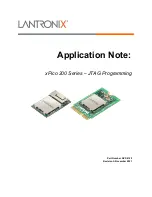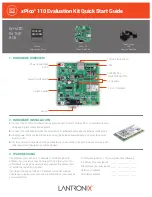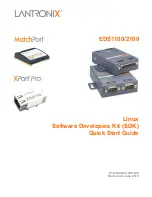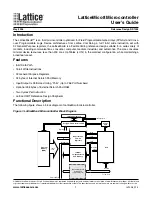DRAFT
DRAFT DRAFT DR
DRAFT DRAFT DRAFT
D
RAF
DRAFT DRAFT DRA
FT D
RAFT DR
AFT D
DRA
FT DRAFT DRAFT
D
RAFT
DRAFT
D
RAFT
DRA
UM10601
All information provided in this document is subject to legal disclaimers.
© NXP B.V. 2012. All rights reserved.
Preliminary user manual
Rev. 1.0 — 7 November 2012
234 of 313
NXP Semiconductors
UM10601
Chapter 19: LPC800 Flash controller
19.5 Functional description
19.5.1 Flash signature generation
The flash module contains a built-in signature generator. This generator can produce a
32-bit signature from a range of flash memory. A typical usage is to verify the flashed
contents against a calculated signature (e.g. during programming).
The address range for generating a signature must be aligned on flash-word boundaries,
i.e. 32-bit boundaries. Once started, signature generation completes independently. While
signature generation is in progress, the flash memory cannot be accessed for other
purposes, and an attempted read will cause a wait state to be asserted until signature
generation is complete. Code outside of the flash (e.g. internal RAM) can be executed
during signature generation. This can include interrupt services, if the interrupt vector
table is re-mapped to memory other than the flash memory. The code that initiates
signature generation should also be placed outside of the flash memory.
19.5.1.1 Signature generation address and control registers
These registers control automatic signature generation. A signature can be generated for
any part of the flash memory contents. The address range to be used for generation is
defined by writing the start address to the signature start address register (FMSSTART)
and the stop address to the signature stop address register (FMSSTOP. The start and
stop addresses must be aligned to 32-bit boundaries.
Signature generation is started by setting the STRTBIST bit in the FMSSTOP register.
Setting the STRTBIST bit is typically combined with the signature stop address in a single
write.
show the bit assignments in the FMSSTART and FMSSTOP
registers respectively.
19.5.1.2 Signature generation
A signature can be generated for any part of the flash contents. The address range to be
used for signature generation is defined by writing the start address to the FMSSTART
register, and the stop address to the FMSSTOP register.
The signature generation is started by writing a 1 to the SIG_START bit in the FMSSTOP
register. Starting the signature generation is typically combined with defining the stop
address, which is done in the STOP bits of the same register.
The time that the signature generation takes is proportional to the address range for which
the signature is generated. Reading of the flash memory for signature generation uses a
self-timed read mechanism and does not depend on any configurable timing settings for
the flash. A safe estimation for the duration of the signature generation is:
Duration = int((60 / tcy) + 3) x (FMSSTOP - FM 1)
Table 210. FMSW0 register bit description (FMSW0, address: 0x4003 C02C)
Bit
Symbol
Description
Reset value
31:0
SIG
32-bit signature.
-


















